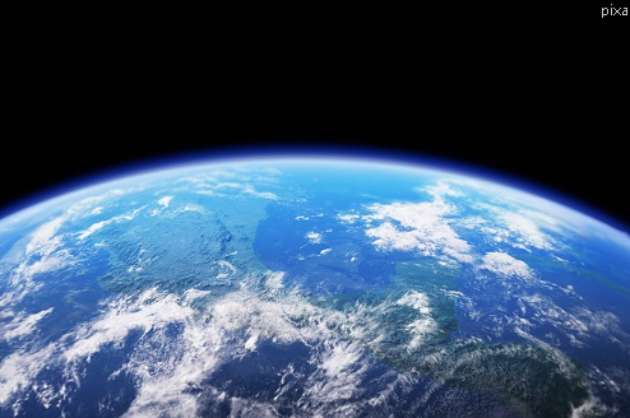Anupama Nair
We live on a beautiful planet called earth, along with a wide variety of living organisms. The earth, is part of the vast universe. The universe is about 15 to 20 billion years old. The age of the earth is approximately 4 to 5 billion years, while human beings evolved around 2 million years ago. The widely accepted theory of the origin of universe is the ‘Big Bang’ theory. According to this theory, universe started with a huge explosion and matter like dust and gases filled the entire space. The temperature of the universe then, was around hundred billion degrees Celsius.
Scientists believed that the Big Bang occurred about 15 to 20 billion years ago. The huge collection of dust and gases then began to spin. As it spun faster and faster, the center of the solar system became very hot and it became the Sun. From the Sun, big blobs or chunks of dust broke off and formed eight ball shaped planets. The earth broke off about 4.5 billion years ago with an explosion. It was a burning hot white mass of gas and dust. Over a long period of time, dust and gas gradually condensed to form solid rock.
The crust of the earth was formed from cooling and hardening of the molten matter and hot gases. With cooling of the earth, the crust hardened and formed the land. The cooling of the earth also condensed water vapor into liquid water filling the depressions to form the seas. “The earth with its blue skies, vast oceans and lush green forests is the home to wide variety of organisms. It has its own unique atmosphere. The atmosphere also helps to regulate the ambient temperature which is suitable for supporting life. If you could dig a deep hole into earth the deeper you go, the hotter it becomes”.
In the beginning, i.e., more than 4.6 billion years ago, the world was a ball of burning gas, spinning through space. At first, super-heated gases were able to escape into outer space, but as the Earth cooled, they were held by gravity to form the early atmosphere. Clouds soon began to develop as water vapor collected in the air, and then it began to rain, that caused the early oceans to rise up. It took hundreds of millions of years for the first land masses to emerge. Earth's first continents may have risen out of the ocean around 700 million years ago.
About 250 million years ago, long after the Earth was formed, all the continents of the time had joined together to form a super-continent called Pangaea, which broke up about 200 million years ago to form two giant continents, called Gondwana and Laurasia. Gondwana comprised what is now Africa, South America, Australia, Antarctica and India. The Indian Sub-continent was then in the east coast of Africa, before it broke off and moved north quickly. It struck with the continent of Asia, creating one of the world’s greatest mountain ranges, that extended for more than 2,502,500 KM, called the Himalayas. By then, our world had almost started to look like the world of today.
Did you know that the first stable continental land to have risen about 3.2 billion years ago may have been the Singhbhum region of Jharkhand in India? The study was conducted in the Proceedings of the National Academy of Sciences (PNAS). “The team of researchers from India, Australia, and the US had acquired the sandstones in Singhbhum having geological signatures of ancient river channels, tidal plains and beaches over 3.2 billion years old”.
The study was led by author, Dr. Priyadarshi Chowdhury of Monash University, who said “we realized these were ancient riverine rocks, formed in rivers and estuaries. We had plate tectonics today to control the elevation. When two continents collide, you form the Himalayas, you form the Alps. That wasn't the case 3 billion years ago”. The Singhbhum craton (a large stable block of the earth's crust forming the nucleus of a continent) may have been formed from a pile of lava over time and the crust became so thick that it floated on the water just like an iceberg.
The team of researchers removed zircon from the Singhbhum sediments. They estimated the age of the rocks by shooting lasers at the zircon and then measuring the relative amounts of elements released. The cratons parallel to that of Singhbhum one, existed in South Africa and Australia also. The researchers were of the view “that the weathering of the cratons would have led to nutrient runoff, supplying the ocean with phosphorus and other building blocks for early life in the planet”.
The scientists believed that once a landmass is created, shallow seas such as lagoons are also created, thereby accelerating the growth of oxygen-producing life forms that may have boosted oxygen in the atmosphere and ocean. The emergence of early continents would also have drawn carbon dioxide down from the atmosphere, leading to localized pockets of cold climate and the formation of glaciers which was the first step towards making the Earth more habitable.
The astonishing process of plate tectonics, in which the Earth’s land masses move slowly across the Earth’s crust, is still continuing even now. They predicted far in the future, the present continents will join again, to form a new supercontinent.
When that will happen only time will open…




























